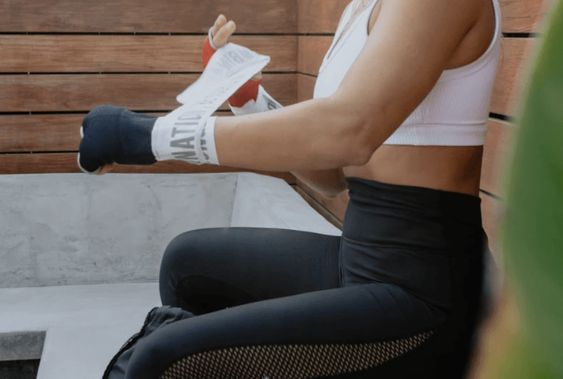How to Wrap Your Hands for Boxing?
Boxing is an intense sport that demands not just skill and endurance, but also a deep understanding of how to protect your body. One of the most crucial steps in preparing for a boxing match or training session is wrapping your hands. This might seem like a minor detail, but it plays a significant role in preventing injuries and ensuring you can train effectively. So, how exactly do you wrap your hands for boxing? Let’s break it down.
Why Wrap Your Hands for Boxing?
Before we get into the step-by-step process, it’s important to understand why hand wrapping is necessary. Your hands are made up of many small bones and joints that can easily get injured during the high-impact activity of boxing. Wrapping your hands provides protection by securing these bones and reducing the risk of fractures, sprains, and other injuries. Moreover, proper hand wrapping offers enhanced wrist support, which is essential for throwing punches with the correct technique.
What You Need for Hand Wrapping
To wrap your hands effectively, you’ll need the right materials. Let’s go over the different types of hand wraps and additional equipment you might need. Don’t Miss to Check Out Our Website Ecomindset.xyz
Traditional Cotton Wraps
Traditional cotton wraps are the most common type used by boxers. These wraps are usually around 180 inches long, providing ample material to cover your hands and wrists securely.
Mexican-Style Wraps
Mexican-style wraps are slightly elastic, offering a snugger fit compared to traditional cotton wraps. They’re popular for their comfort and flexibility, making them a favorite among many fighters.
Gel Wraps
Gel wraps are a more modern alternative, offering padding without the need for traditional wrapping. These are typically used for quick training sessions but are not as secure as the other options for intense boxing.
Additional Equipment
In some cases, you might need extra items like tape or scissors to customize your wrap or cut the tape to the desired length.
Step-by-Step Guide: How to Wrap Your Hands

Now, let’s get into the nitty-gritty of wrapping your hands. Follow these steps to ensure your hands are protected and ready for action.
Preparing Your Wraps
Before you start, make sure your wraps are straightened out and free of any twists or folds. This will make the wrapping process smoother and more effective.
Positioning Your Hand
Begin by spreading your fingers wide. This ensures the wrap covers your hand evenly without restricting movement. Place the loop of the wrap over your thumb to anchor it, and you’re ready to start.
Wrapping the Wrist
Start by wrapping your wrist three to four times, depending on the length of your wrap and the level of support you need. This creates a solid base and stabilizes your wrist.
Wrapping the Thumb
Next, wrap the thumb to protect it from injury. Wrap the material around your thumb at least once, then bring it back down to your wrist and secure it there.
Wrapping the Knuckles
Now, move on to the knuckles. Wrap around your knuckles three to four times, ensuring that each layer is smooth and even. This is crucial for protecting the small bones in your hand.
Securing the Fingers
To add extra support to your fingers, you can wrap the material between each finger. Start between your pinky and ring finger, then move to the rest of your fingers, wrapping the material back around your knuckles each time.
Wrapping the Palm
After securing your fingers, wrap around your palm to keep the material in place. This also adds another layer of protection for the middle of your hand.
Finalizing the Wrap
Finally, wrap your wrist a few more times to secure everything in place. If you have any excess wrap, you can use it to reinforce areas that need extra support. Finish by securing the wrap with the Velcro or tape, making sure it’s tight but not cutting off circulation.
Common Mistakes to Avoid
While wrapping your hands may seem straightforward, there are some common mistakes that can reduce the effectiveness of your wraps.
Wrapping Too Tight or Too Loose
If your wraps are too tight, they can restrict blood flow and cause discomfort. On the other hand, wraps that are too loose won’t provide the support you need. Aim for a snug fit that allows movement without slipping.
Ignoring the Thumb
The thumb is one of the most injury-prone parts of your hand. Failing to wrap it properly can lead to sprains or fractures, so always make sure it’s adequately supported.
Overlapping Wraps Incorrectly
Incorrectly overlapping the wraps can create pressure points and cause discomfort. Ensure that each layer of wrap lies flat and smooth against your hand.
Tips for Effective Hand Wrapping
To make sure you’re wrapping your hands as effectively as possible, here are a few tips:
Double Wrapping the Knuckles
If you feel your knuckles need extra protection, consider double wrapping them. This involves adding an additional layer of wrap over your knuckles after completing the first round.
Keeping the Wraps Smooth
Wrinkles or folds in the wrap can cause discomfort and even blisters during training. Always keep the wraps as smooth as possible.
Ensuring Flexibility
While support is important, so is flexibility. Make sure your hands can move freely and that you can comfortably make a fist after wrapping.
When to Replace Your Hand Wraps
Hand wraps don’t last forever. Over time, they can wear out and lose their effectiveness.
Signs of Wear and Tear
Look for signs like fraying edges, thinning material, or loss of elasticity. If your wraps are showing these signs, it’s time to replace them.
How Often to Replace
Depending on how often you train, you might need to replace your wraps every few months. Regular washing and proper care can extend their lifespan, but eventually, they will need to be replaced.
How to Care for Your Hand Wraps
Proper care of your hand wraps will ensure they last longer and remain effective.
Washing Instructions
Always wash your wraps after every use to prevent the build-up of bacteria and odor. Place them in a mesh bag and wash them in cold water on a gentle cycle.
Proper Drying Techniques
Air dry your wraps by laying them flat or hanging them up. Avoid using a dryer, as the heat can damage the material and reduce the wraps’ lifespan.
Alternatives to Traditional Hand Wraps
If traditional hand wraps aren’t your thing, there are alternatives available.
Quick Wraps
Quick wraps are pre-formed gloves that you can easily slip on. They offer less support than traditional wraps but are convenient for quick training sessions.
Tape and Gauze
Some fighters prefer using tape and gauze, especially in professional settings. This method allows for a more customized fit but requires more time and expertise.
The Role of Hand Wrapping in Different Combat Sports
Hand wrapping isn’t exclusive to boxing; it’s also crucial in other combat sports.
Boxing vs. MMA
In MMA, hand wraps are often used in conjunction with smaller gloves. The wraps need to offer support while also allowing for grappling.
Boxing vs. Muay Thai
In Muay Thai, fighters often use less wrapping around the knuckles and more around the wrists to accommodate for the clinching aspect of the sport.
Conclusion
Wrapping your hands properly is a key aspect of preparing for any boxing session. It protects your hands from injury, supports your wrists, and allows you to train with confidence. By following the steps outlined in this guide and avoiding common mistakes, you can ensure that your hands are well-protected every time you step into the ring.
FAQs
How tight should my hand wraps be?
Your hand wraps should be snug but not too tight. You should be able to move your fingers freely without the wraps slipping.
Can I reuse my hand wraps after washing them?
Yes, as long as your hand wraps are in good condition, you can reuse them after washing.
Is it okay to box without hand wraps?
It’s not recommended to box without hand wraps, as they provide crucial protection and support.
How long should my hand wraps be?
Most hand wraps are 180 inches long, which is suitable for most hand sizes. If you have smaller hands, you might opt for 120-inch wraps.
What’s the difference between hand wraps and gloves?
Hand wraps are used underneath gloves to provide additional support and protection. Gloves offer cushioning and protect the hands during impact.

Ryan is a creative content creator with a broad interest in topics that range from technology and business to lifestyle and entertainment. He has been writing professionally for several years, developing a style that is both informative and engaging. Ryan’s goal is to provide readers with valuable information while keeping them entertained, no matter the subject matter. Outside of writing, Ryan is passionate about fitness, cooking, and exploring new cultures through travel.

